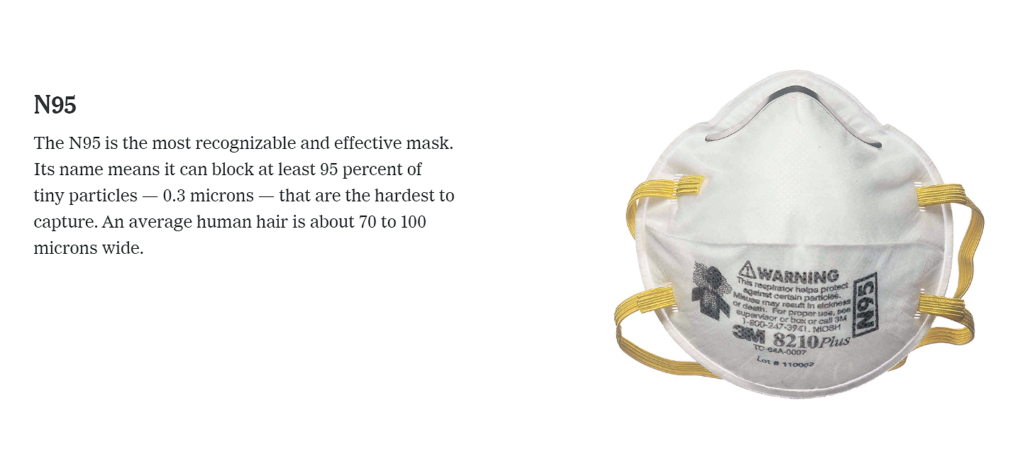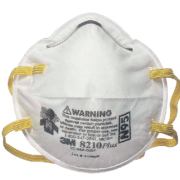In this Global Pandemic, Which Masks Protect You and the Community?
Face masks have become an emblem in the fight against the coronavirus, with officials in the United States and elsewhere recommending as the best front line defense to slow the spread of a deadly and global pandemic.
Protective face masks have become a part of our daily wardrobe, like shoes, there are essential in most circumstances. In this article, BeyondKona will explore which types of masks protect, and to what degree and the level of protection you can expect from different options.
Figuring out what to wear is not easy, and supply options are limited.
N95 and medical masks, which offer the most protection and are heavily in demand. Even if you could your hands on N95 medically designed and FDA approved for such use, with ongoing PPE shortages, N95 medical masks should be reserved for health care workers who are regularly exposed to infected patients.
N95 masks – the gold standard for protection

The N95 is the most recognizable and effective mask. Its name means it can block at least 95 percent of tiny particles — 0.3 microns — that are the hardest to capture. An average human hair is about 70 to 100 microns wide.
These masks, which are designed for single use, are made with polyester and other synthetic fibers, including layers of tangled fibers that act as a filter to make it harder for particles to pass through.
Make sure there are no gaps between the edge of the mask and your skin. This one includes a nose piece that is molded to your face. Many health care and other workers do annual fit tests that check for air leakage and ensure that masks are sized and fit properly. (If you have facial hair, you won’t get a proper fit. They don’t fit well on children, either.)
Some N95s have exhalation valves on the front, which make it easier to breathe. Those masks are often used in construction. A mask with a valve should not be used in areas that are meant to be sterile, like hospital operating rooms, and would not protect others from what you breathe out.
Medical – throwaway (disposable) masks that offer limited protection, and a growing global waste problem

Medical masks come in a few varieties and are less effective than N95s: Some filter as much as 60 to 80 percent of small particles under lab conditions. When worn properly, they can help prevent the spread of the coronavirus by catching droplets when you cough or sneeze.
Medical masks are often made out of layers of breathable, paper-like synthetic fabric that is cut into a rectangular shape and has pleats to help it expand and fit more snugly around your face. They are disposable and designed to be used just once.
While they can protect you from large droplets and splatter, their looser fit is partly what makes them less effective than N95s.

- Coronavirus waste has become a new form of pollution as single-use personal protective equipment (PPE) floods our ocean.
- COVID-19 has had a number of unexpected impacts on the environment, curtailing recycling and increasing the use of plastic around the world.
- Governments need to act now to ensure a green recovery that incentivizes sustainability.
Homemade – reusable masks that can provide limited protection
With medical masks in short supply, many have turned to making or buying homemade ones. Depending on the fabric and how it’s made, a homemade mask can sometimes protect the way a simple medical version does. And any face covering is better than nothing.

A good homemade mask uses a material that is dense enough to capture viral particles, but breathable enough that you can tolerate it.
This one is made of cotton fabric.
You can also use materials like a heavy cotton t-shirt, flannel or a tightly woven dish towel.
Material with a higher thread count — which allows very little light to filter through — will likely offer the best protection.
Various patterns for making a cotton mask have spread around the internet. Look for one that has at least two layers of material, comes up over your nose and below your chin and has secure straps.
Homemade & Fabric Masks with Filters – reusable masks that can provide superior protection

This is another homemade mask, made from 100-percent cotton t-shirts, with a pocket sewn in to hold an additional filter.
We used a coffee filter in this mask. Paper towels have also been tested. One experiment found that two layers of paper towels on their own blocked between 23 and 33 percent of 0.3-micron particles.
People have been experimenting with filtering materials, including air filters and vacuum bags. They can be effective but can present risks. Many are not breathable and may contain harmful fibers that you could inhale.
Also, the average person doesn’t need the level of filtration that these materials provide.

Whatever filter you use, make sure there is a layer of cotton or a similar material on either side of the filter, like the pocket in this mask.
A mask is effective only if worn properly, fitting snugly from the top of the nose to below the chin with no gaps. Masks should be worn the entire time you are outside, and should not be moved up and down. While no mask is 100 percent effective, it can help keep both you and others safe when combined with social distancing and regular hand washing.
An additional mask information resources are available courtesy of the New York Times:
2) tips on how not to wear one,
3) what the best materials are for making a mask ,and




Face Masks Against COVID-19: An Evidence Review
Jeremy Howard * ORCID logo , Austin Huang , Zhiyuan Li , Zeynep Tufekci , Vladimir Zdimal , Helene-Mari van der Westhuizen ORCID logo , Arne von Delft , Amy Price , Lex Fridman , Lei-Han Tang , Viola Tang , Gregory L. Watson , Christina E. Bax , Reshama Shaikh , Frederik Questier ORCID logo , Danny Hernandez , Larry F. Chu , Christina M. Ramirez , Anne W. Rimoin
Version 1 : Received: 10 April 2020 / Approved: 12 April 2020 / Online: 12 April 2020 (17:41:10 CEST)
Version 2 : Received: 12 May 2020 / Approved: 13 May 2020 / Online: 13 May 2020 (13:16:04 CEST)
Version 3 : Received: 10 July 2020 / Approved: 12 July 2020 / Online: 12 July 2020 (16:11:50 CEST)
How to cite: Howard, J.; Huang, A.; Li, Z.; Tufekci, Z.; Zdimal, V.; van der Westhuizen, H.; von Delft, A.; Price, A.; Fridman, L.; Tang, L.; Tang, V.; Watson, G.L.; Bax, C.E.; Shaikh, R.; Questier, F.; Hernandez, D.; Chu, L.F.; Ramirez, C.M.; Rimoin, A.W. Face Masks Against COVID-19: An Evidence Review. Preprints 2020, 2020040203 (doi: 10.20944/preprints202004.0203.v1). Howard, J.; Huang, A.; Li, Z.; Tufekci, Z.; Zdimal, V.; van der Westhuizen, H.; von Delft, A.; Price, A.; Fridman, L.; Tang, L.; Tang, V.; Watson, G.L.; Bax, C.E.; Shaikh, R.; Questier, F.; Hernandez, D.; Chu, L.F.; Ramirez, C.M.; Rimoin, A.W. Face Masks Against COVID-19: An Evidence Review. Preprints 2020, 2020040203 (doi: 10.20944/preprints202004.0203.v1).Copy
Abstract
The science around the use of masks by the general public to impede COVID-19 transmission is advancing rapidly. Policymakers need guidance on how masks should be used by the general population to combat the COVID-19 pandemic. Here, we synthesize the relevant literature to inform multiple areas: 1) transmission characteristics of COVID-19, 2) filtering characteristics and efficacy of masks, 3) estimated population impacts of widespread community mask use, and 4) sociological considerations for policies concerning mask-wearing. A primary route of transmission of COVID-19 is likely via small respiratory droplets, and is known to be transmissible from presymptomatic and asymptomatic individuals. Reducing disease spread requires two things: first, limit contacts of infected individuals via physical distancing and contact tracing with appropriate quarantine, and second, reduce the transmission probability per contact by wearing masks in public, among other measures. The preponderance of evidence indicates that mask wearing reduces the transmissibility per contact by reducing transmission of infected droplets in both laboratory and clinical contexts. Public mask wearing is most effective at stopping spread of the virus when compliance is high. The decreased transmissibility could substantially reduce the death toll and economic impact while the cost of the intervention is low. Thus we recommend the adoption of public cloth mask wearing, as an effective form of source control, in conjunction with existing hygiene, distancing, and contact tracing strategies. We recommend that public officials and governments strongly encourage the use of widespread face masks in public, including the use of appropriate regulation.
TAKE HOME: WHICH MASK IS NOT THE IMPORTANT VARIABLE. MASK COMPLIANCE IS. LETS BE CLEAR 95% OF US WEAR ONE WE CAN REDUCE TO R0 TO 1.